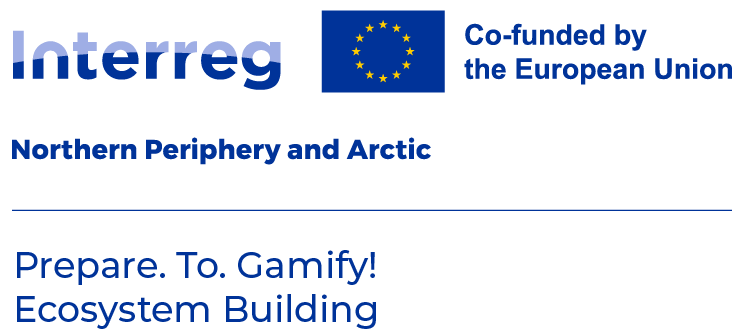“Prepare. To. Gamify! Ecosystem Building”
– Survey for organizations involved and interested in game development, gaming and gamification activities
The main aim of this project is to evaluate the level of interest in developing the gaming industry and gamification ecosystems in rural regions, as part of The Interreg Northern Periphery and Arctic Programme. Read more about the project in the articles Opportunities brought by the game industry and gamification and The Role of Digitalization: Can Young Adults be Encouraged to Stay in Regions Outside Major Cities?.
Gamification involves integrating game mechanics into non-game environments to boost engagement and participation. Using gamified methods is an effective way for everyone to benefit from digital advancements, increasing the value of business innovations and solving social-health issues.
A long-term objective is to involve local and international stakeholders in game development, gaming, and gamification, to gather insights, and boost awareness.
This survey is a joint effort between Savonia University of Applied Sciences, Region Västerbotten, Mind Detonator, and Ardán. The survey is open until September 8th, 2024, and filling out the form should take about 5 minutes.
Answering the survey does not obligate you in any way, but it would be great if we could contact you for more detailed information.
EU FUNDING PROGRAMME
Interreg Northern Periphery
and Arctic
Project priority
Innovation
Project period
Start 01.12.2023
End 30.11.2024
Objective
1.2 Reaping the benefits of
digitisation for citizens,
companies, research
organisations and public
authorities
Total budget
99.967,84 EUR
NPA co-financing
64.979,08 EUR




